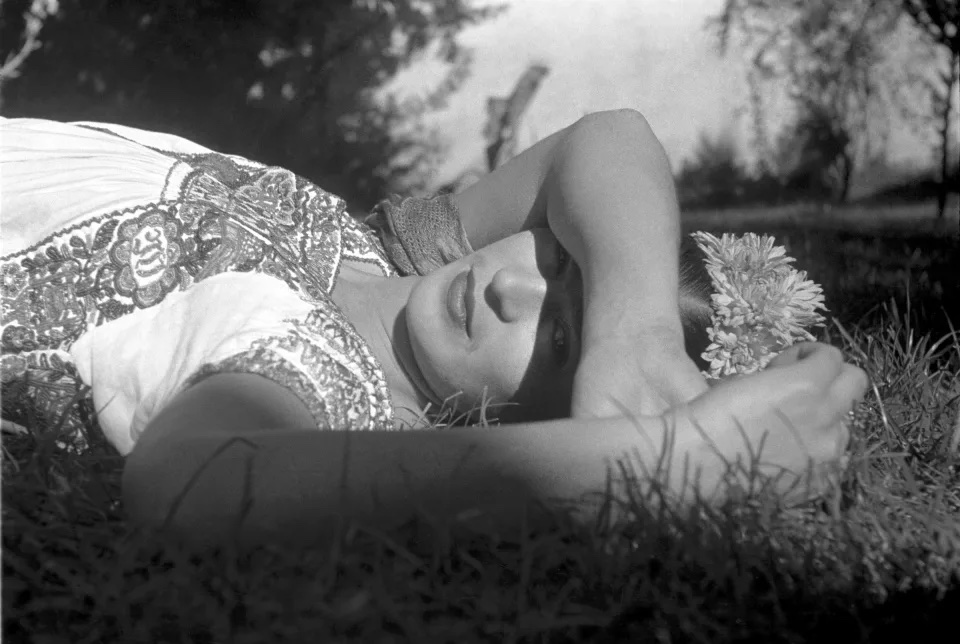It seems that we’re living in a time where we feel ill at ease with stationary art. We have a desire to awaken the portrait—at the Musée d’Orsay in Paris, for instance, an A.I. van Gogh appears on a screen to interact with visitors and walk them through his art. And the Immersive Van Gogh Exhibit has visited over 40 countries across three continents. This is an existential question ever-present in the art world: can we—or should we—adapt art to the modern technological world?
And van Gogh is not the sole artist to receive this kind of treatment: Mexican painter Frida Kahlo—van Gogh’s compatriot in the realm of artists whose work has been heavily reproduced, licensed and commercialized—was also the subject of an immersive exhibit in Toronto. Hers, however, was far less popular (and has only visited nine cities in North America). Perhaps this is because the shtick got old or because the abrasive surrealism of her paintings didn’t make for an as compelling Instagram photo as the floaty, naturalistic impressionism of van Gogh.
This desire to animate Kahlo’s biting work has now jumped mediums to film, which offers a new approach to capturing her life story. Frida, a documentary by Carla Gutierrez centred on the artist’s life, debuted at this year’s Sundance Film Festival. The film features her paintings coming alive set to voiceovers taken directly from her diary: nails hammer themselves into her iconic self-portraits and blood droplets weep from open wounds as we hear of the bus accident that left her disabled, her tumultuous decades-long love affair with iconic Mexican painter Diego Rivera and her interest in leftist politics, all in her own words.
What we unfortunately don’t hear much about is the process through which she created her art—instead, we’re given a rehashing of her romance with Rivera, which has already been the focus of Frida (2002) and myriad other documentaries, including 2023’s Becoming Frida Kahlo for one.
Gutierrez is selective with the archival footage and diary excerpts that she uses to try to portray a sequential, multifaceted portrait of Kahlo. But in being so magnanimous to the many interesting artistic, political and romantic strands that made up Kahlo’s life, we come away with a rudimentary, sanitized understanding of the woman, one that feels contrary to the animosity, rage and passion that are evident in her works.
This is only one of the inconsistencies noticeable in the documentary. Another is that we spend a good deal of time on Rivera, both as an artist in his own right and as Kahlo’s partner, effectively positioning Kahlo in her own documentary as someone’s wife. We’re told more about Rivera’s impact on the art world than of Kahlo’s—ironic, given that Kahlo’s works are predominantly solitary self-portraits. We’re even shown a newspaper clipping where she stands firmly in front of a canvas beneath a headline reading “Wife of master mural painter gleefully dabbles in works of art,” which is no doubt supposed to elicit a feeling of injustice at the subjugation, despite the documentary taking a similar approach.
And even this focus on Kahlo’s romantic life is limited in scope: we’re offered only pithy allusions to her affair with Leon Trotsky and to her bisexuality. In fact, all of the things that made Kahlo subversive during her time—her proclivity to dress in traditionally masculine attire, her affairs with women and her fascination with the macabre—are mentioned in a brief montage and never picked up again.
Kahlo was a master of reinvention: she was obsessed with her self-image, but also fluid in her approach to capturing it, allowing it to morph over time. Her self-portraits are contemplative, then tragic, then furious. Yet, despite the animated portraits, Frida captures her in a stationary image.
Though Kahlo’s paintings were animated with care, Frida overestimates their effectiveness in portraying Kahlo’s artistic genius. This is not to say that we have to remain rigid and unmoving in the ways that we engage with art. The 2017 film Loving Vincent is a phenomenal achievement of animation where artists from around the world painted 65,000 frames in van Gogh’s impressionistic style to tell a textured story of his life.
But in Frida, the animations appear as distractions; visually appealing stand-ins for a narrative that could have explored Kahlo’s place in the surrealist art movement or the ways in which she modified her canvases so that she could still paint while bed-ridden or in a wheelchair.
The most glaring omission is the lack of exploration of Kahlo’s fear of obscurity, which manifested itself in many ways in her personal and artistic life. Twice we learn she wrote letters to her lovers asking them to remember that she “exist[s] on this planet.” Yet there is no connection made between this anxiety and Kahlo’s adamancy to centre herself in all of her artwork and to make the self-portrait her creative identifier.
We are long overdue for a documentary that looks back at Kahlo from the perspective of our modern day: one that showcases how Kahlo began the self-conceptualization and reinvention that artists like Madonna and Lady Gaga have embraced, how she imbued her works with facets of her own identity—being biracial, bisexual, disabled and a woman—that we can now see mirrored in today’s postmodernist art.
Frida is more concerned with modernizing Kahlo’s paintings, when what really needs modernizing is the very approach to telling her life story.
Frida screens in Toronto this month. A run at the TIFF Lightbox begins March 8; there will also be a screening at Hot Docs on March 11.


 Why you can trust Xtra
Why you can trust Xtra


